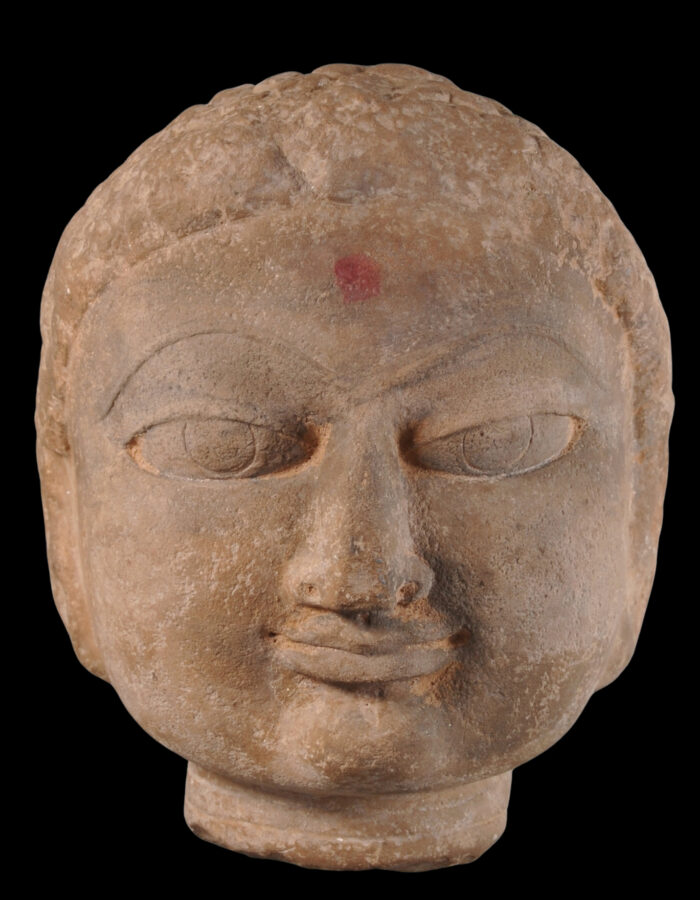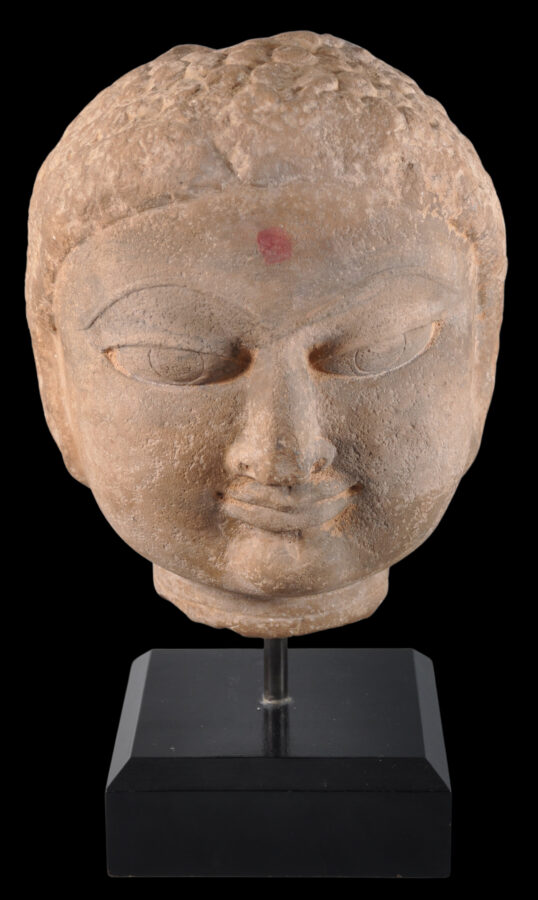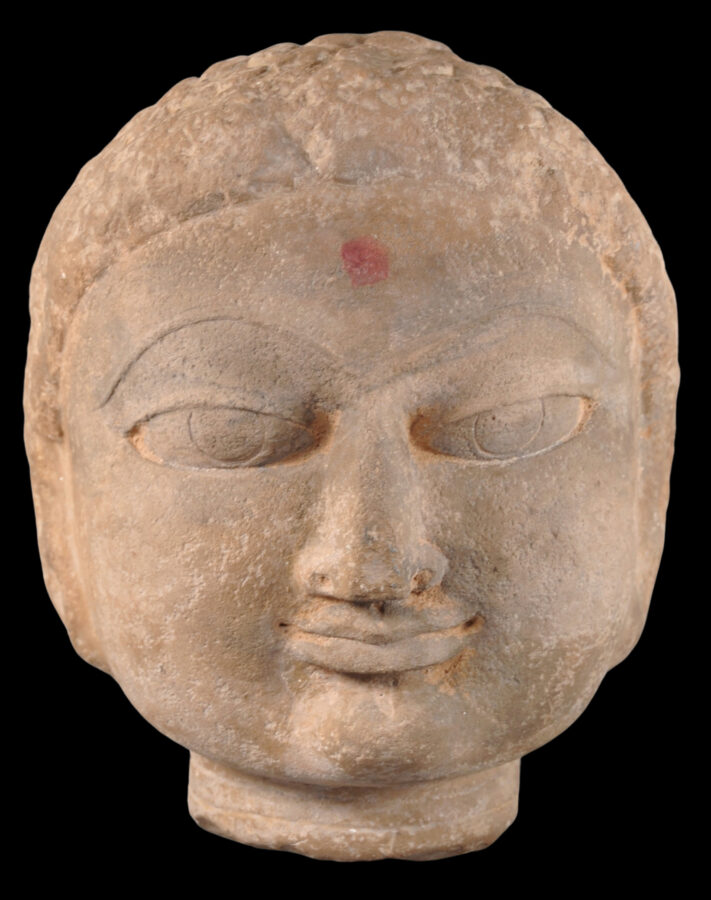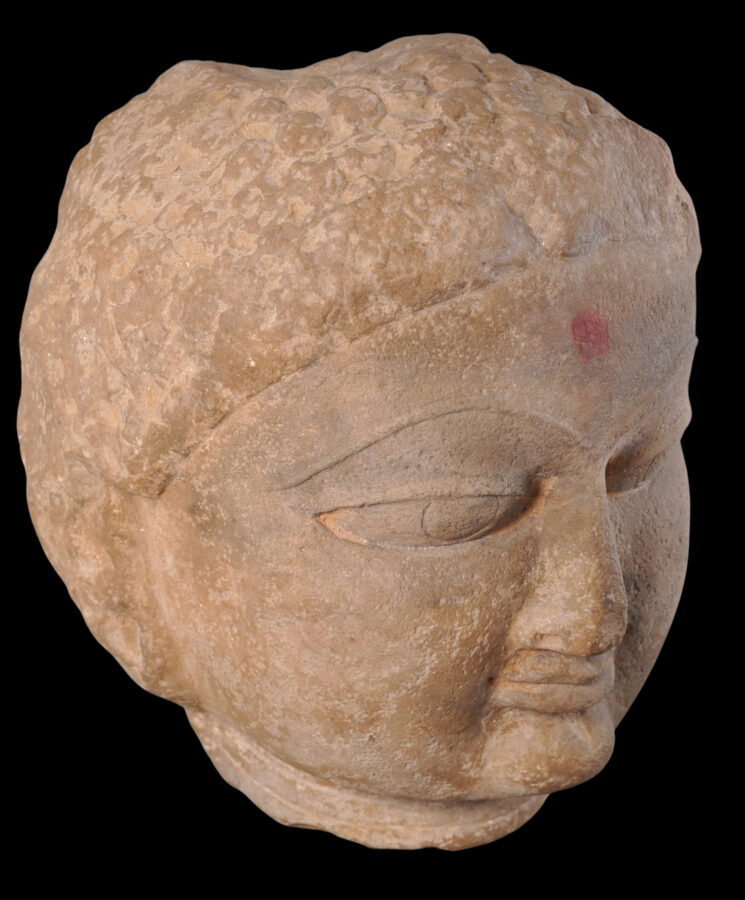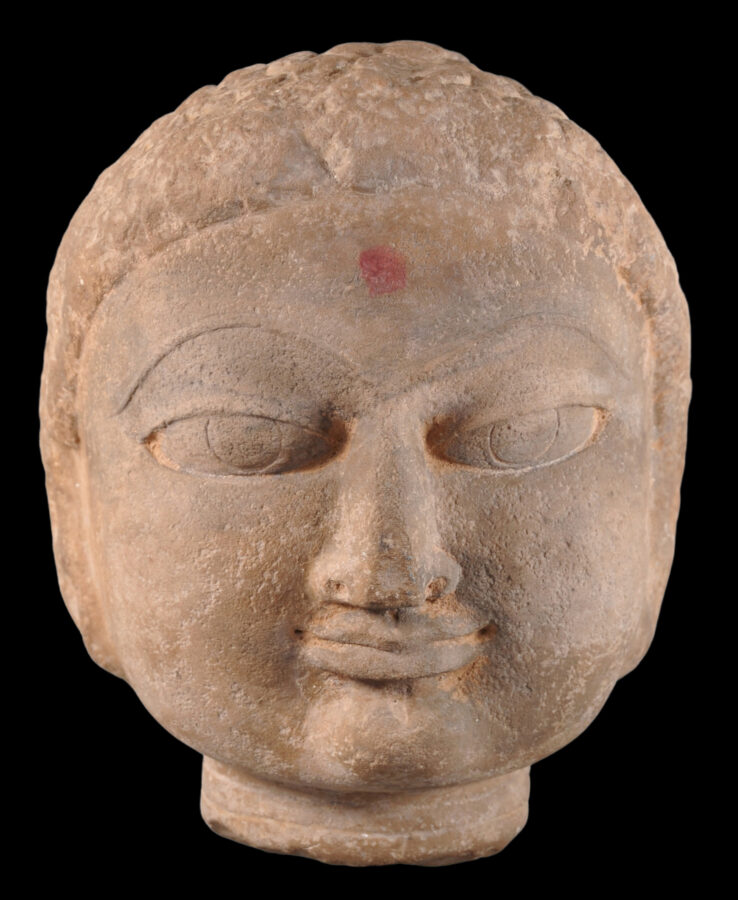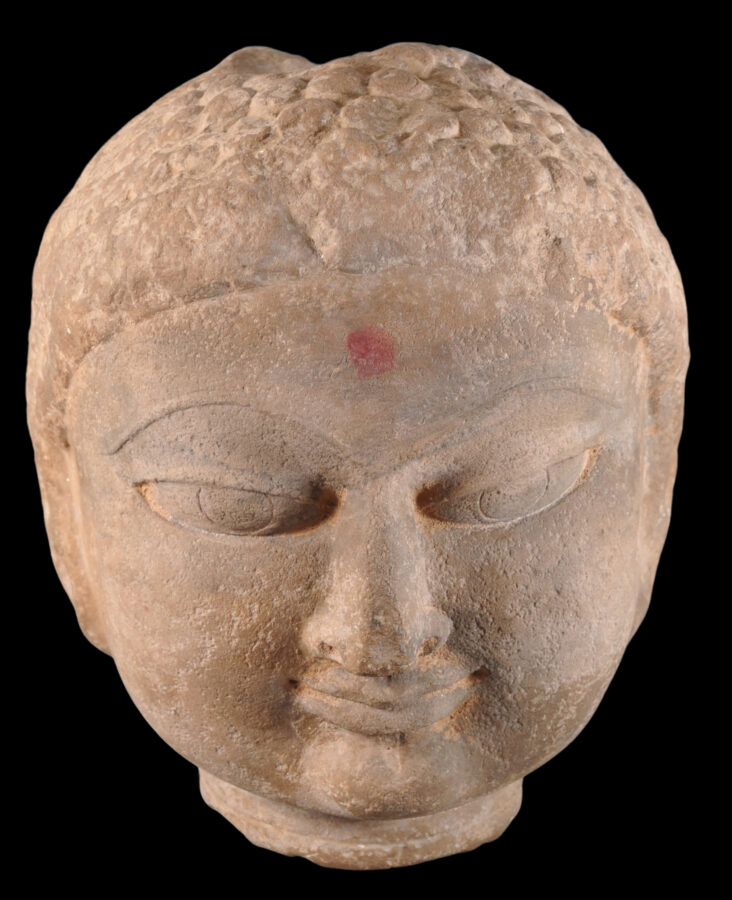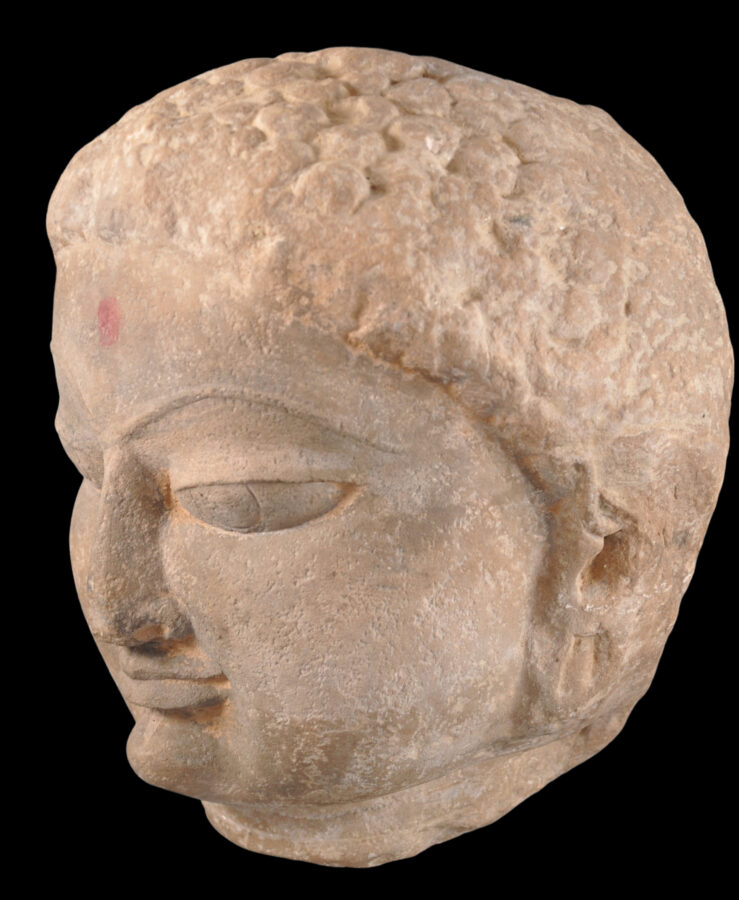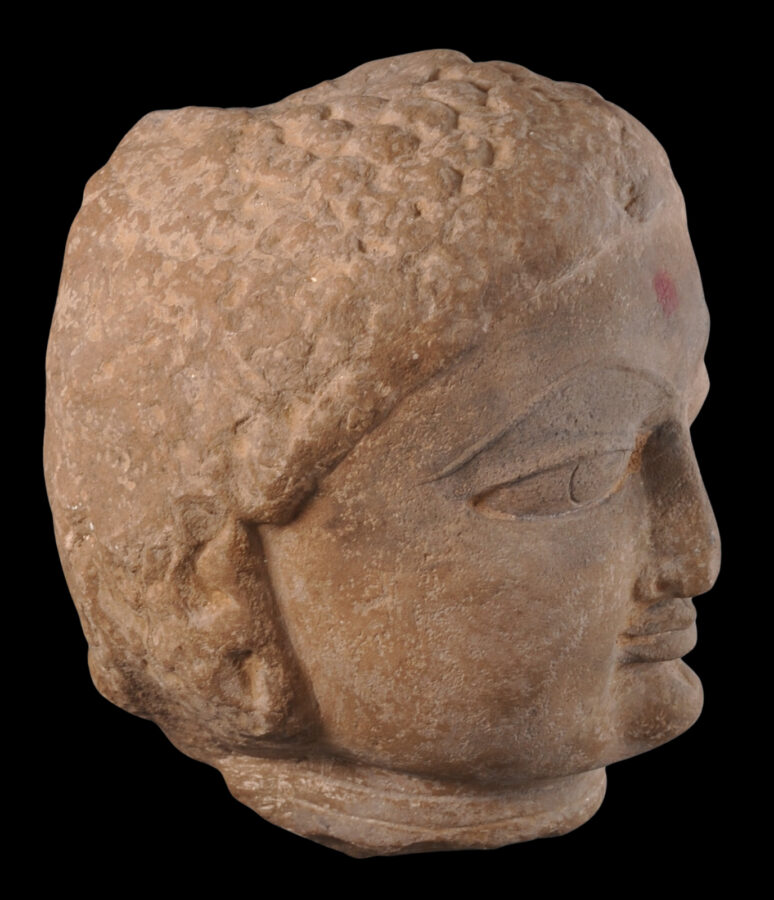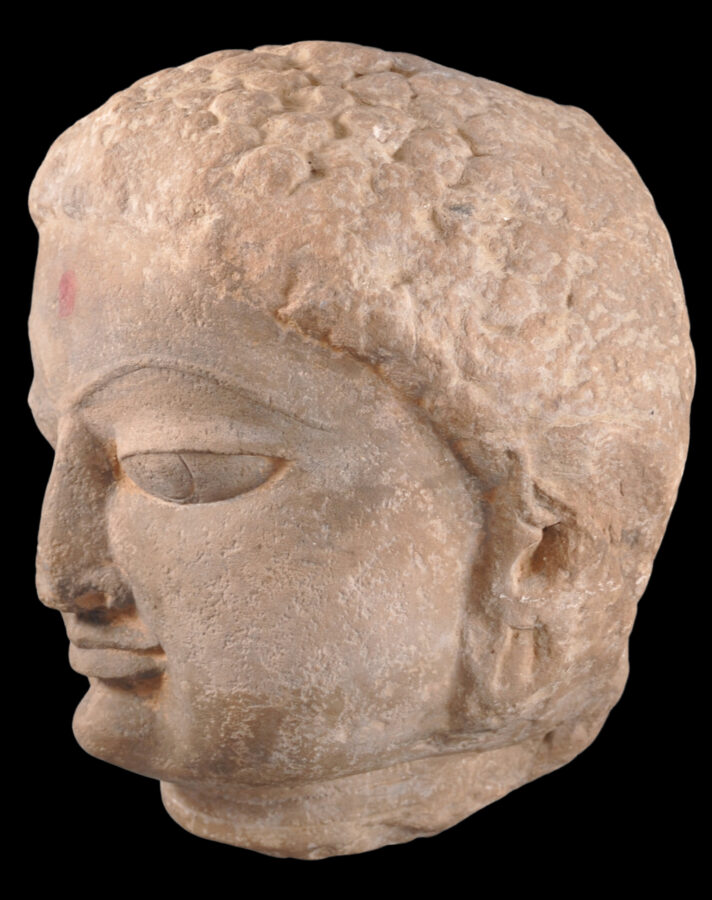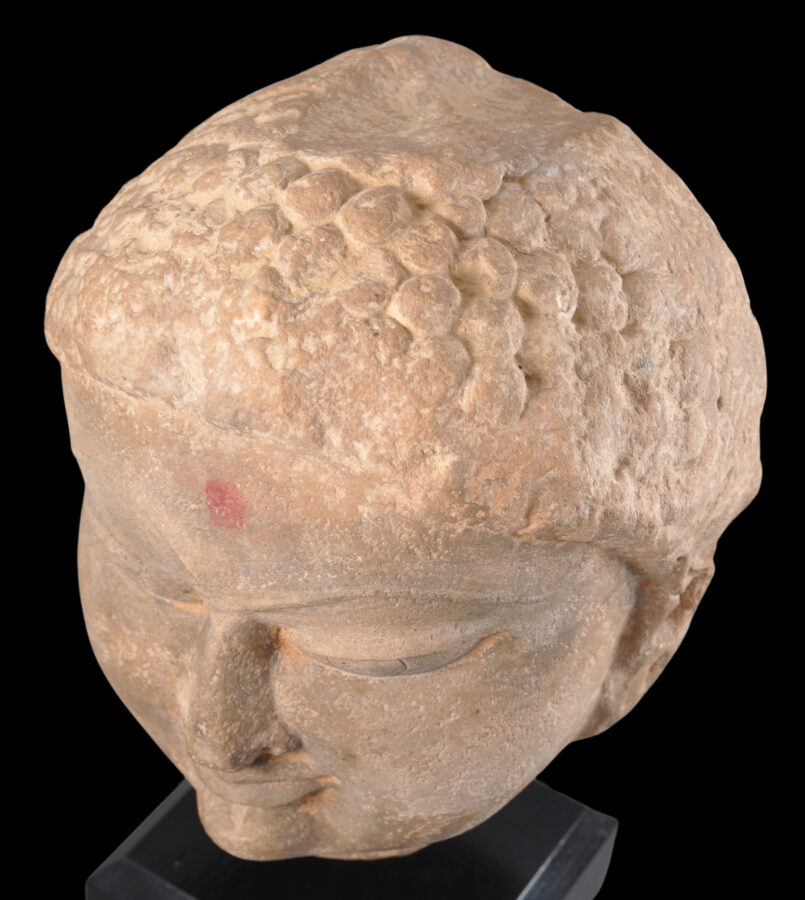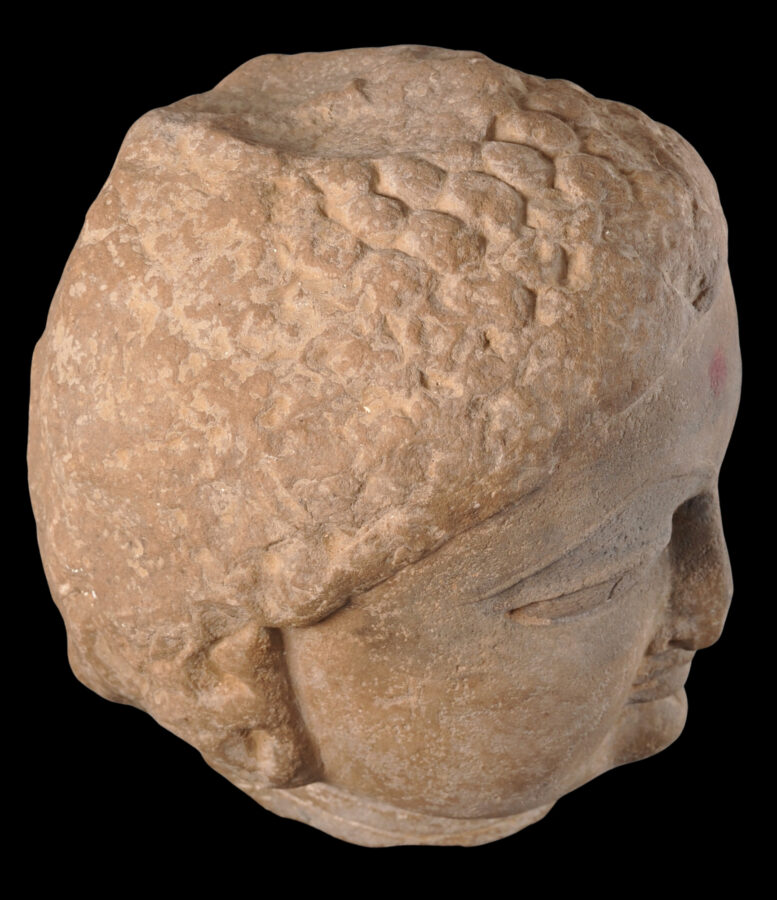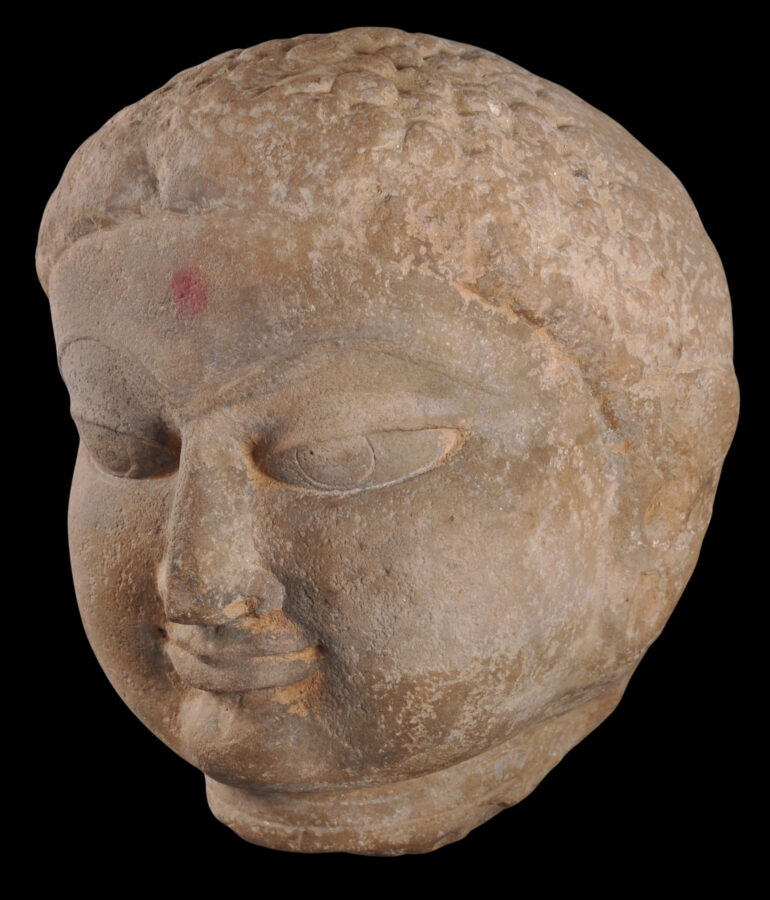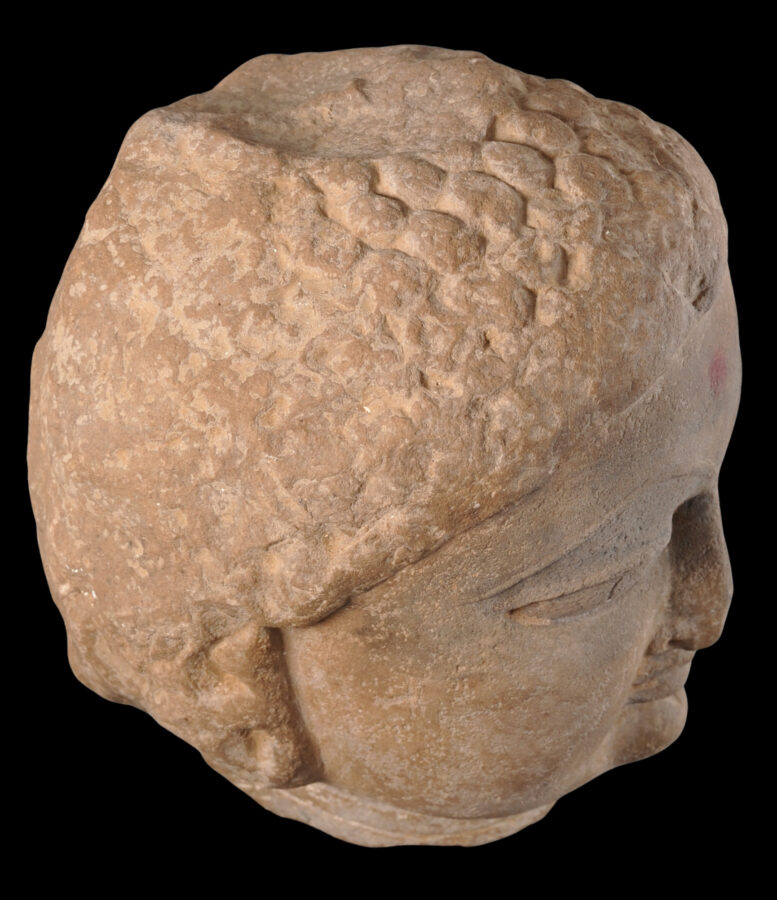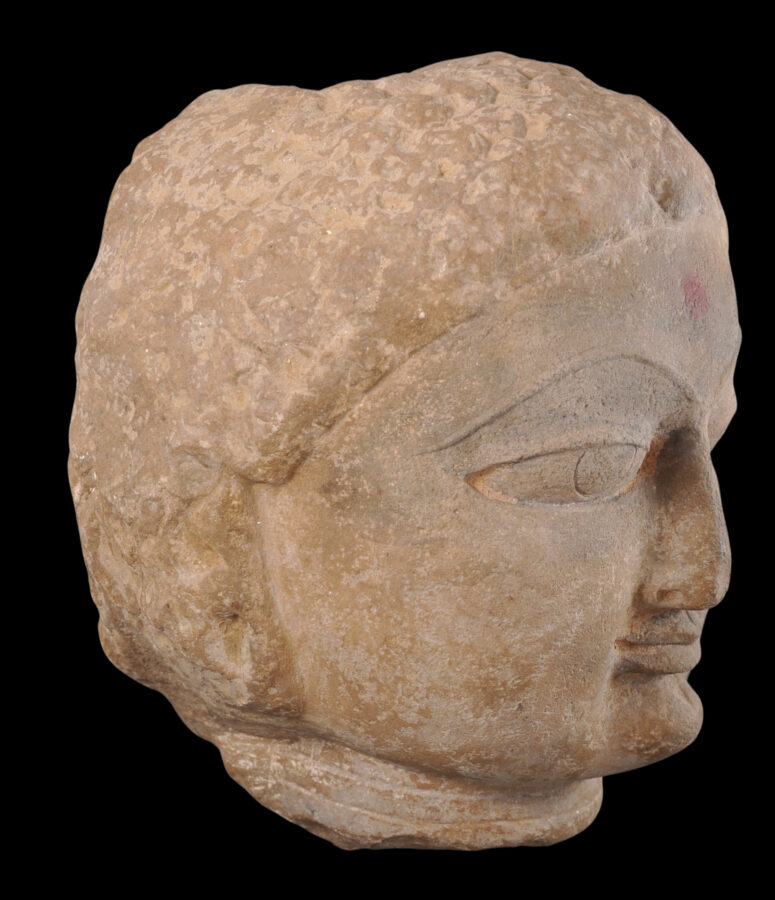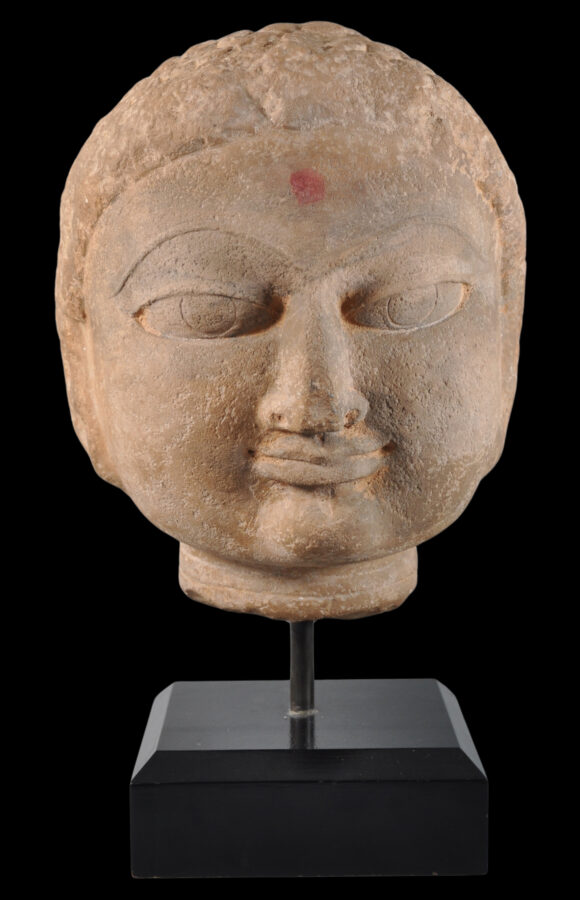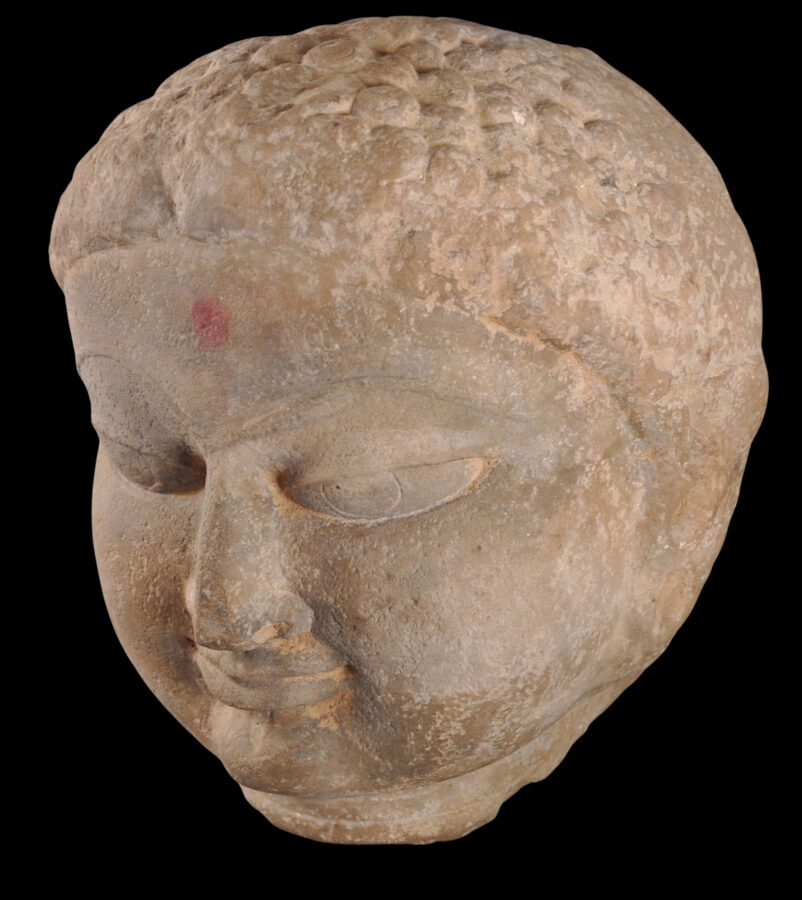Enquiry about object: 9513
Western Indian Sandstone Head of a Jina
Jain Community, Western India 12th century
height: 27cm, width: 21cm
Provenance
private UK collection since circa 2000; prior to that in a private Anglo-Dutch collection since circa 1990. Most probably has been in the UK or Europe since colonial times.
This carved sandstone head from 12th century Western India depicts a Jina (conqueror) or Tirthankara (forder) or great teachers of the Jain faith. It is not possible to identify which Jina is represented but great care has been taken with the rendering of the face with particular delicacy.
The image is typically twelfth century in terms of its form and conception. The face is charming and serenely composed with a prominent chin; large, almond-shaped eyes; full, rounded cheeks; prominent, arched eyebrows; and small, tight curls across the head. The definition of the cheeks is particularly noteworthy in this image, which are more stylised on most depictions of Jinas. The lips have a slight smile. This is not usual for a Jina but is known.
Remnants of a red tilaka powder remain on the image’s forehead, applied by a previous (UK-based) owner. The use of tilaka powder in this manner is not typically Jain (the previous owners were not Jain.)
See lot 89, Bonham’s New York, ‘Indian, Himalayan & Southeast Asian Art’, September 14, 2015 for a very similar twelfth century head of a Jina executed in black marble.
The Jina head here is mounted on a black, custom-made stand for display.
References
van Alphen, J., Steps to Liberation: 2,500 Years of Jain Art and Religion, Ethnographic Museum Antwerp, 2000.
Dye, J.M., The Arts of India: Virginia Museum of Fine Arts, Philip Wilson Publishers, 2001.


